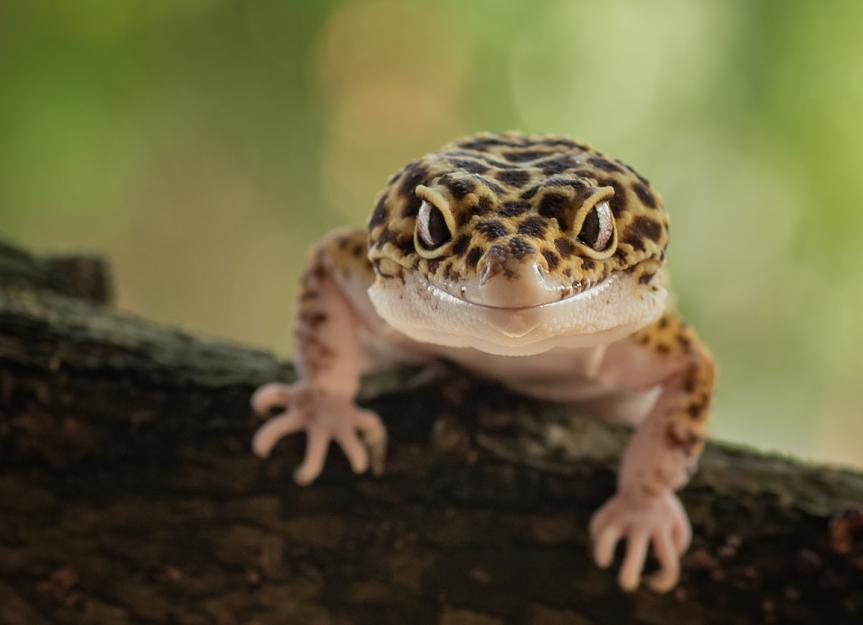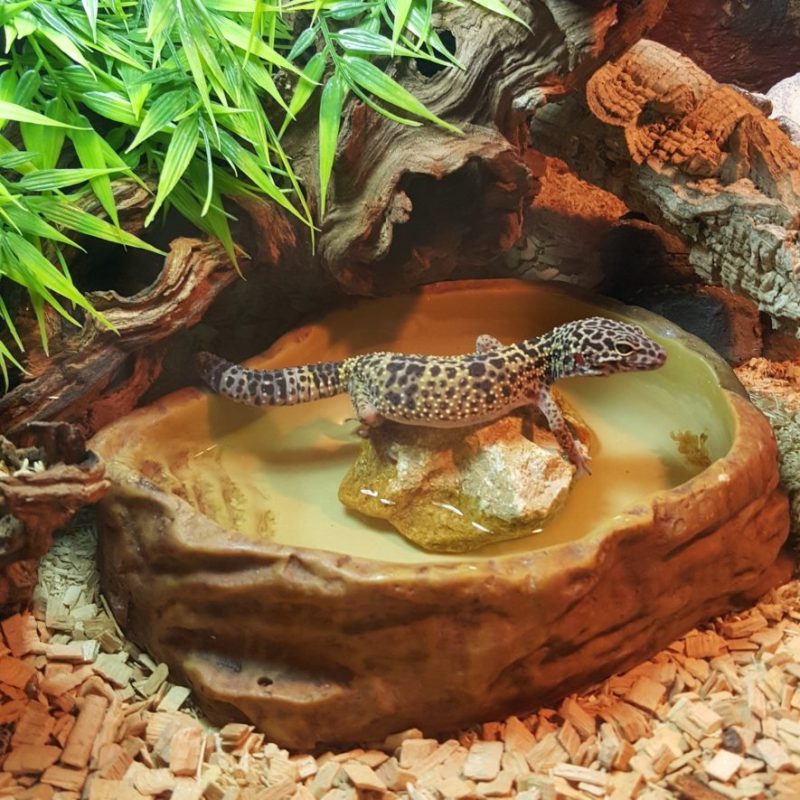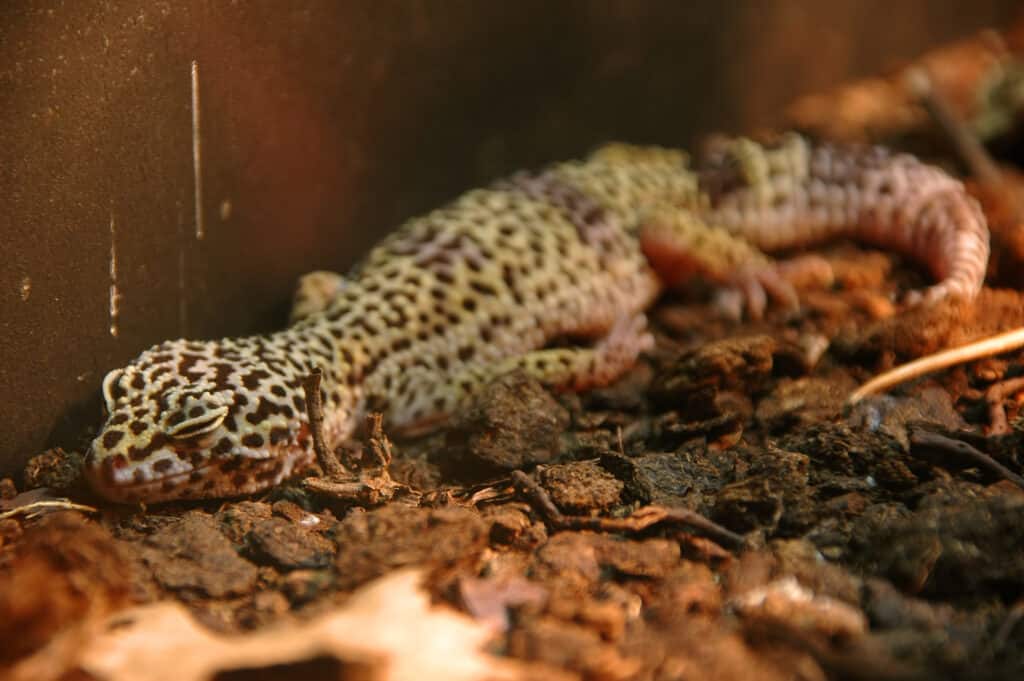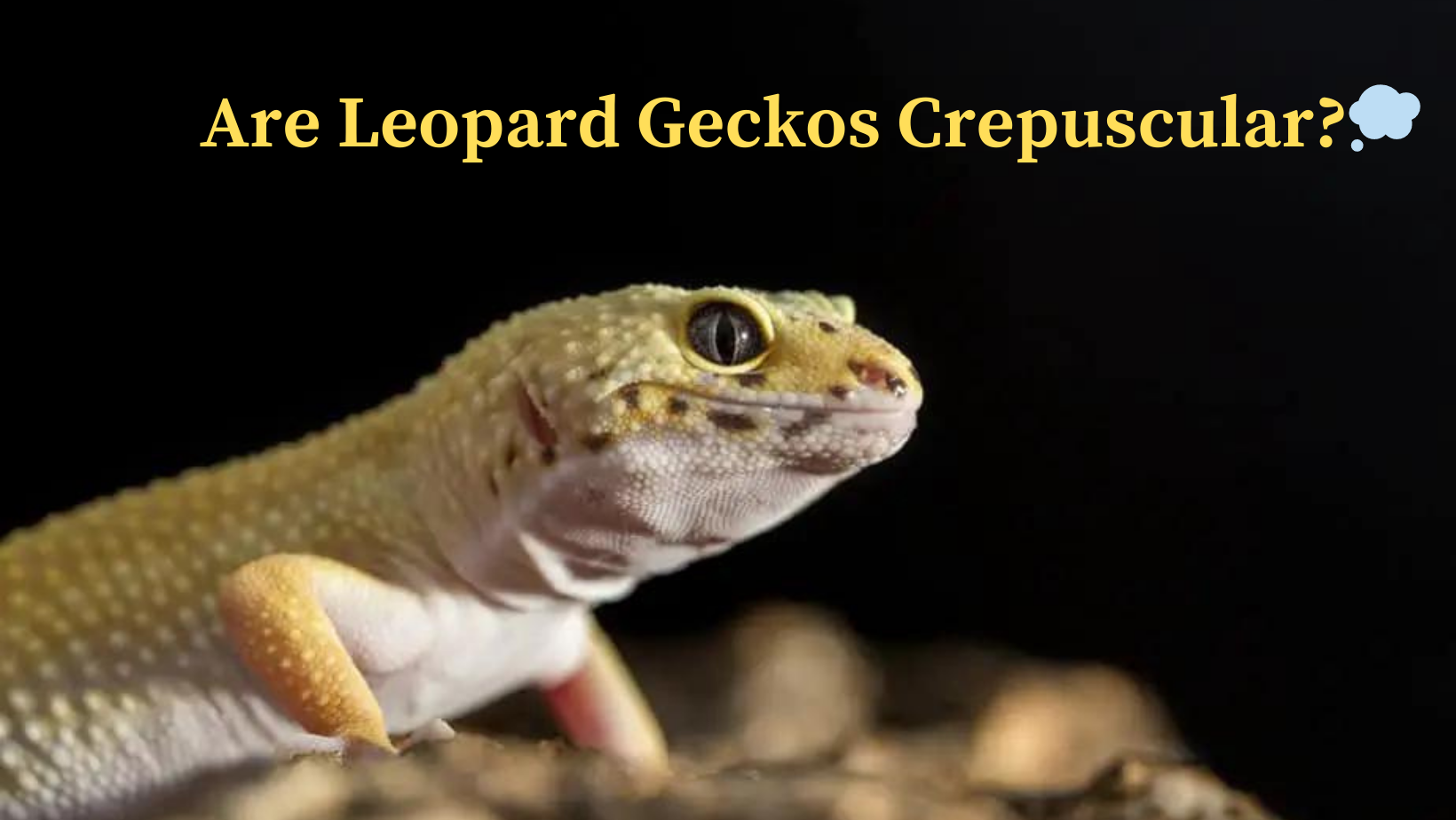Leopard Geckos spend most of their day sleeping. It is natural for them to be awake during the day and sleep during the night. Well, it keeps people in a delusional thinking are leopard geckos, Crepuscular or Nocturnal.
Leopard Geckos are crepuscular and are active during the twilight hours. Their behavior and actions vary depending on several features.
Naturally, they will come out of their shelter when it is twilight and go hunting. Either in the wild or in captivity, being active during the night is regular.
If you are keeping them as pets, make them avoid direct sunlight. The leopard gecko’s natural behavior is similar to leopard gecko’s natural behavior, natural habitat, hiding spots etc.
This article will give you more details about Leopard Geckos. Either you want to spot them in jungles leading their wildlife or want to pet them, stuck here.
Are Leopard Geckos Crepuscular?- Pet Leopard Geckos Vs Wild

Yes, Leopards are widely known as crepuscular. Such types of lives aren’t active during the day or in sunlight. They are during darker times of 24 hr; especially during twilight hours.
Their day and night cycle is different. Dusk and Dawn is the most preferred time of these lizards.
Well, most people seem to confuse this with nocturnal time. Well, there is a slight difference between nocturnal and crepuscular.
Nocturnal beings seem to be active at midnight or nighttime. But Crepuscular will prefer the dawn and dusk times; especially the twilight.
During dawn, when the first sunlight they get back to their shelters. You will spot them during those times when it is not fully faded. However, there have exceptions to the situation; if you consider both day and night time.
If you are petting a leopard, you will want to schedule their feeding time. And, according to the environmental differentiation, pet leopards will seem to wake up early in the morning.
This routine of them requires scheduling several standpoints. However, this is not a usual observation for wild leopards.
Leopard Geckos: Crepuscular Vs Nocturnal?
According to research, wild leopards prefer roaming during nighttime because of less competition with other predators.They become become more active when it hits twilight.
During the daylight, they prefer resting under rocks in the jungles. They will only come out when it is twilight. survival mechanism for leopard geckos is easier for leopard geckos.
Leopard geckos might depend on their natural temperature regulation process. These beings depend on external sources of heat they are getting. The other reason could be food availability, light condition, territorial behavior, and predator avoidance.
It’s important to note that leopard geckos are predominantly crepuscular. Leopard geckos have adapted to their environment by having specialized eyes well-suited for low-light conditions.
Leopard Gecko’s Live: Things you need To Know
If you want to understand leopards’ crepuscular behaviors, you should check on these factors-
Interact with your leopard gecko

Leopards either domestic or wild; none of them are that social. These animals will not entertain you like other pets. However, you don’t have to do a lot of care here. This doesn’t mean, they are anti-social. These animals will respond well if you want to pet them.
Sleeping Habitat
If we talk about the natural schedule, leopards will seem to sleep during daylight under rocks/ piles/snugly. These are quiet safe places to hide and find comfort.
Living Environments

As Leopard geckos are crepuscular, they don’t require intense UVB lighting like diurnal reptiles. However, providing a low-level UVB source can offer some benefits for domestic leopard geckos.
Also, maintain a temperature gradient within the enclosure. The warm side should have a basking spot of around 88-92°F (31-33°C), while the cooler side should be around 75-80°F (24-27°C). And, Use heat sources like under-tank heating pads or ceramic heat emitters.
Diet
Leopard geckos are insectivores, meaning they primarily eat insects. Provide a variety of insects such as crickets, meal worms, and Dubia roaches.
Well, these are attracted to creep bugs that are crawling near you. So, you don’t have to arrange fruits, eggs, milk, and other food pyramid elements here.
Can Leopard Geckos See in the Dark?
Yes, Leopard geckos are most active during the night time. You can not compete as a human being with leopard gecks in terms of seeing clearly during nighttime.
Sources say, leopard geckos can see 350 times better than human beings. Well, it might sound distinct but, they can distinguish color palates.
Leopard geckos have a high density of rod cells in their retinas. These are photoreceptor cells that are sensitive to dim light.
Also, tapetum lucidum is another part of the retina that enhances the night vision of the geckos. Even, their pupil constructions will vary their capability depending on the light levels and sources.
How Much Does a Leopard Gecko Sleep? : Day and Night Cycle

It is known that leopards love sleeping the whole time when the sun is up. The time is approximately 12 hours which is completely normal. Sleep during the day properly is a sign that the leopard is healthy and doing well.
They can sleep more than any other nocturnal animals. If you spot leopard geckos awake during the daytime, they might be struggling with the food, environment, lighting and etc.
Should I Turn My Leopard Geckos Light Off at Night?
Well, other animals might find nighttime comfortable for sleeping. But, it is not the same in the case of leopard geckos. They can be accurate in the dark.
So, if you want to let your pet leopard sleep at night, you better leave the lights on. Keeping the lights off will keep them awake as they are active at such times.
Wrap Up
“Leopard geckos nocturnal or diurnal” is a commonly asked question. This article might have cleared all your doubts. If you are researching wild leopards or petting domestic cones, their natural behaviors of them are similar.
Leopard geckos being crepuscular can see incredible clear at night. And, they maintain a good sleep cycle in daylight to maintain health conditions.



